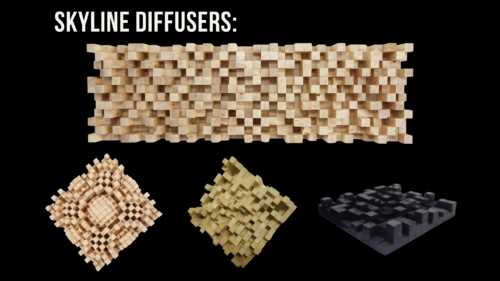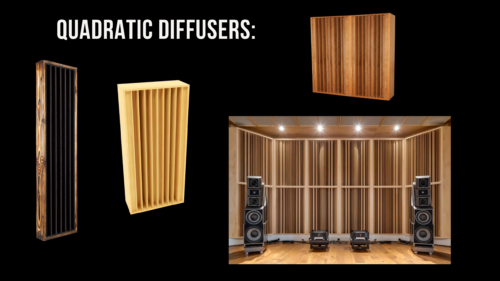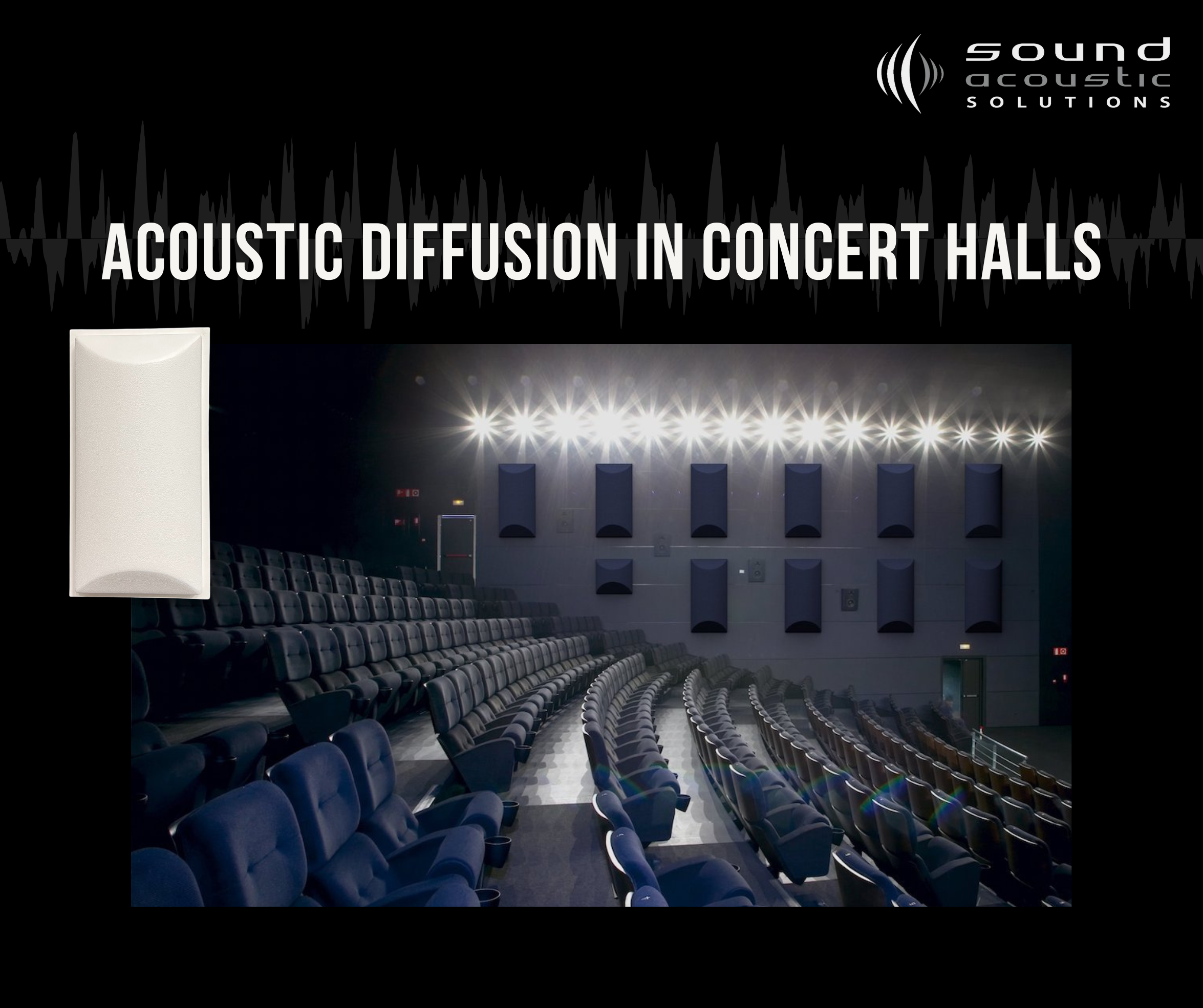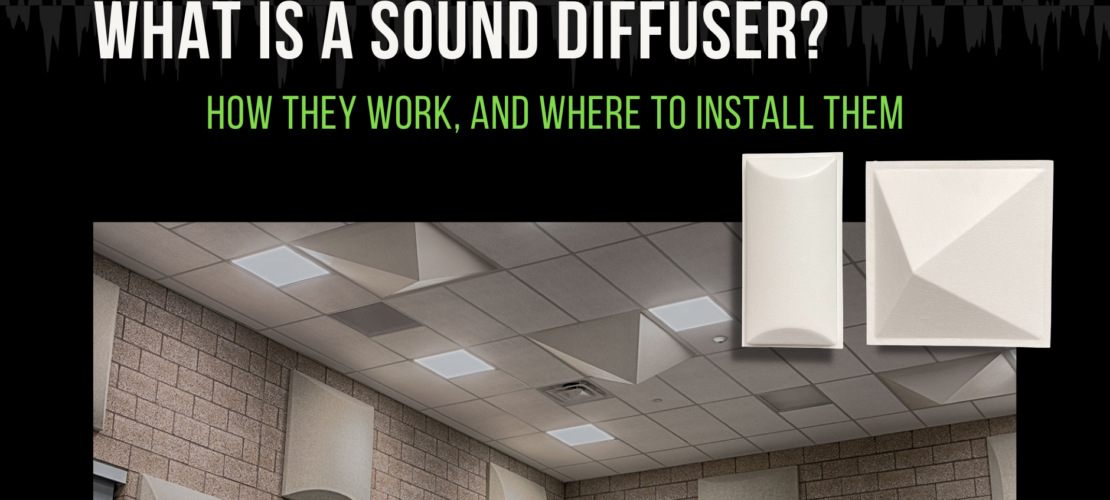Acoustic Diffusion in Concert Halls
What is Acoustic Diffusion?
Acoustic diffusion is a technique used to evenly distribute sound waves within a space. This is important in concert halls because uneven sound distribution can cause standing waves, which can result in distorted or muffled sound. By diffusing sound, an orchestra, choir, or school play will be heard by their audience in the way they want to be heard.
Theaters, auditoriums, or halls, etc. all have one thing in common, they are a room where people go to listen to a production. And much like how a chef works to create tasty meals to have satisfied customers, the performers at a hall want to be heard so their customers are satisfied. We can turn up the stereo in our house all we want, but if we adjust the delivery such as adding a few speakers to our sides, or a speaker behind us, we can experience a much different listening experience. Much is the same when it comes to utilizing diffusers in a concert hall. By breaking up sounds in certain areas, we allow the sound that reaches the audience to change and enhance the listening experience.
Types of Diffusers:
There are many different types of diffusers that can be used in concert halls, which is understandable since not all concert halls are the same. Different rooms will need their own different types of treatment to get the desired result and there are many diffusers that are available. In this blog entry, we will discuss the various types of diffusers that can be used in concert halls and auditoriums.
The first type is called a skyline diffuser. The most common form of the skyline diffuser is 2×2 wood pieces cut at various lengths and combined parallel to each other to give a randomly organized visual appearance. Depending on the manufacturer, the skyline diffuser may be randomly organized, or it could be custom created to affect certain frequencies. Skyline diffusers can be more common in home studios as the busy nature can quickly diffuse sound waves within a small space.

Quadratic residue diffusers can be quite common in concert halls. These diffusers are typically a type of wood plank with longitudinal channels cut at varying depths. These are designed to affect specific frequencies. And an acoustical consultant should be able to express how much each frequency range is affected by the number of quadratic residue diffusers are used. Each channel will, in a way, change the sound wave and reflect it back out in a dispersed pattern and keep what is left, ie residue.

2D quadratic diffusers work by using a series of panels with geometric shapes and patterns cut into them. These shapes and patterns are designed to scatter sound waves in different directions, which helps to evenly distribute sound within the space. This type of diffuser is effective because it can scatter sound waves across a wide frequency range, which is important for creating a balanced and natural sound in a concert hall.
In addition to using quadratic residue diffusers, concert halls can also incorporate other acoustic design elements to improve the sound quality in their spaces. For example, they can use reflector panels, such as solid panels or curved surfaces, to reflect sound waves back into the space. This can help to increase the overall sound level and improve the clarity of sound in the concert hall. Next time you are at a school play or concert, chances are if you look up, you will see reflector panels. Similar to reflective panels are barrel and pyramidal diffusers. These are more often used in school band rooms but can be used in any large area. These are easily identifiable as their names are descriptive. Barrels look like a partial barrel or semicircle; pyramidal diffusers look like pyramids.
Another important aspect of acoustic design in concert halls is the placement of speakers and sound sources. To create the best sound quality, speakers should be placed in strategic locations throughout the space. This can help to evenly distribute sound and reduce the formation of standing waves.
In addition to using diffusers and reflective materials, concert halls can also incorporate sound absorbing materials into their design. These materials, such as acoustical panels or sound-absorbing ceiling tiles, can help to reduce unwanted echo and reverberation in the space. Even though acoustic panels are primarily sold as ‘absorbers’ by their very nature the random glass fibers in an acoustic panel diffuse sound waves.
Overall, acoustic diffusion is an important technique for improving the sound quality in concert halls. By choosing from the various diffusers available and other acoustic design elements, architects and acousticians can create a more natural and balanced sound for concert hall audiences. This can enhance the overall experience of attending a live performance and help to create a more enjoyable and immersive listening experience.

